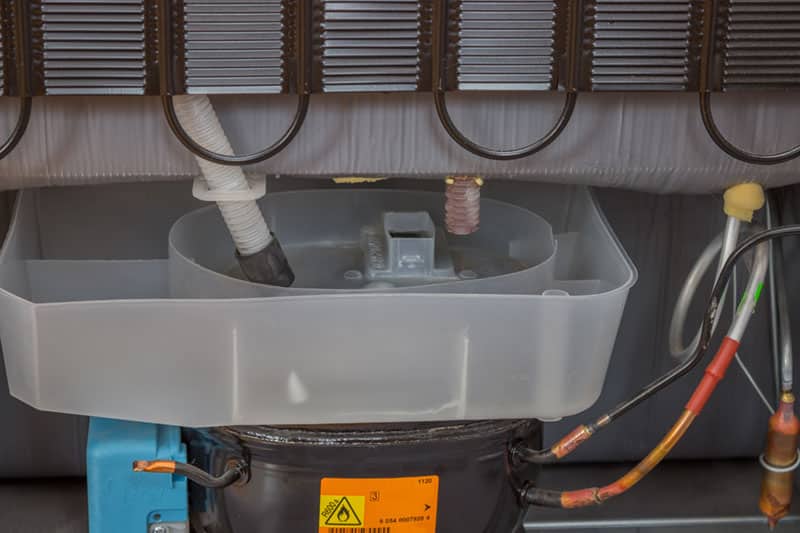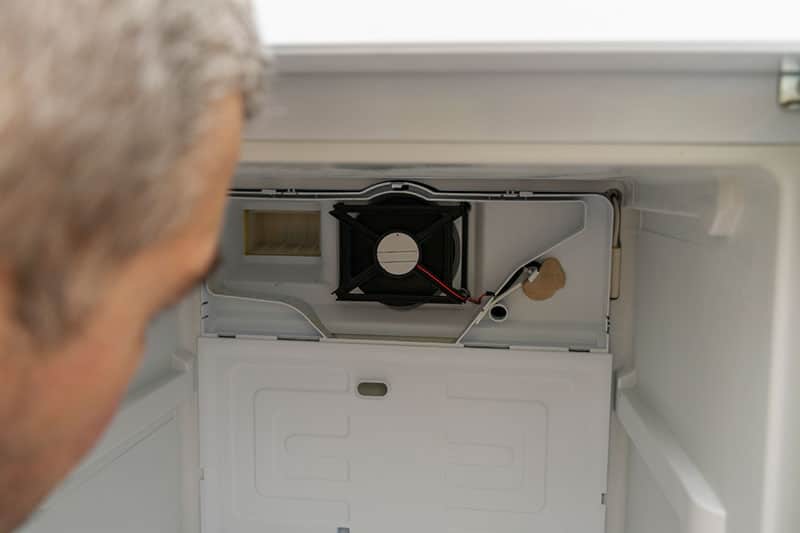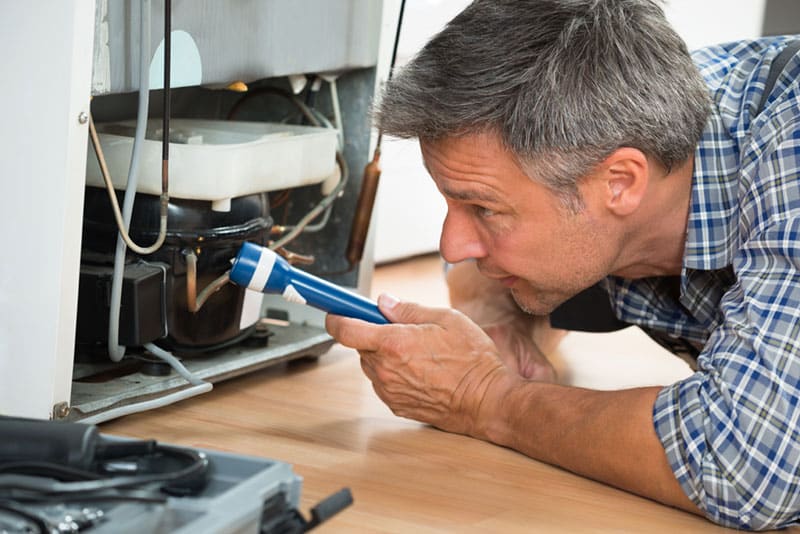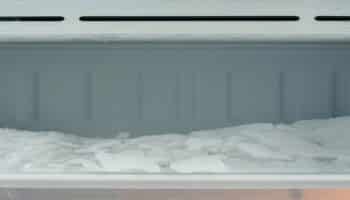Does your freezer temperature fluctuate? Some days it resembles a frosty Arctic circle and others a mild New York December. Take a look at the 3 methods in this article that will help you stabilize it.
If your freezer temperature is always changing, do this to steady it.
- Clean the condenser coils
- Remove any obstructions from the evaporator fan motor
- Remove any obstructions from the condenser fan motor
Condenser coils, evaporators, and condenser fan motors? It may all sound complicated, but fixing these components is easier than you think. Take a look at these steps in more detail below.
3 Ways to Steady Your Freezer Temperature
Does your freezer temperature seem somewhat unstable? Sometimes it’s uber cold, you can barely root around and find your ice cream before it practically gives you frostbite. Other times it’s so warm it takes 2 days just to get half a dozen ice cubes to settle.
What can you do to settle your freezer temperature? Take a look at the 3 methods coming up in this article that will help.
#1 Clean the Condenser Coils
The condenser coils on your refrigerator remove the heat collected withing the cabinet and transfer it to the outside of the unit. But if your condenser coils are dirty, your freezer could have a hard job keeping cool. This is because the layers of dirt and dust insulate the coils, making it hard for them to do their job properly.
Here’s how you can clean your condenser coils and get your freezer to cool efficiently.
- Plug the fridge out at the mains
- Turn off the circuit breaker to the refrigerator or unplug the appliance from the wall.
- Shut off the water supply to the refrigerator
- Take the access panel off of the back of the unit
- Use a bristled vacuum attachment to vacuum around the condenser coils. Make sure you remove all the dust from around them.
- Use a cloth to remove the dust from the harder-to-reach areas. This includes between the coils or any other dusty elements behind the fridge. You should do this once or twice a year to ensure that your fridge and freezer work to the best of their ability.
- Plug the fridge back in at the mains
- Turn the water supply back on
- Turn on the circuit breaker to the refrigerator to restore power to the appliance.
- Monitor the temperature inside the freezer to see if the problem is fixed

#2 Remove Any Obstructions From the Evaporator Fan Motor
The evaporator fan motor draws air through the evaporator coils to remove the heat from the air. This means that if your evaporator fan motor is faulty, it could stop your freezer from freezing. And that means no oven fries or ice cream. So, we have to do something about that, urgently.
How can you make sure that the motor is working properly? Take a look at the following instructions that will help you keep it in good working order.
- Plug the fridge out at the mains
- Turn off the circuit breaker to the refrigerator
- Shut off the water supply to the refrigerator
- Remove the freezer shelves
- Remove the back panel of the freezer. You will now be able to see the evaporator fan motor.
- Check that there isn’t anything obstructing the evaporator fan motor blades
- Use a handheld torch to inspect the blades more closely. Try moving the blades around with your fingers. They should move freely. If they don’t, the motor bearings might have worn out and need replacing.
- After you have removed obstruction from the blades, plug the fridge back in at the mains
- Turn the water supply back on
- Turn on the circuit breaker to the refrigerator
- Monitor the temperature inside the freezer to see if the problem is fixed

#3 Remove Any Obstructions From the Condenser Fan Motor
The condenser fan motor draws in air to cool the condenser coils and compressor. So, if your condenser fan motor is faulty, your freezer will not maintain its temperature. This will explain the mushy peas and the half-frozen burger patties.
Here’s what you can do to ensure that your condenser fan motor is working as it should.
- Plug the fridge out at the mains
- Turn off the circuit breaker to the refrigerator
- Shut off the water supply to the refrigerator
- Take the access panel off of the back of the refrigerator
- Check that there isn’t anything obstructing the evaporator fan motor blades. Use a handheld torch to inspect the blades more closely.
- Try moving the blades around with your fingers. They should move freely. If they don’t, the motor bearings might have worn out and need replacing.
- After you have removed obstruction from the blades, plug the fridge back in at the mains
- Turn the water supply back on
- Turn on the circuit breaker to the refrigerator
- Monitor the temperature inside the freezer to see if the problem is fixed

What if the Temperature Still Fluctuates?
Have you completed the 3 steps in this article but find that your freezer temperature is still unstable? Then your freezer could be presenting a more complex problem that you will have to call a technician to fix.
Your freezer could have a problem with any of the following components.
- The defrost timer
- The cold control
- The temperature sensor or control board
- The defrost thermostat
- The defrost heater
For a closer look into each of these problems, check out this helpful video.
How Often Should a Freezer Cycle On and Off?
The average freezer cycle is about 30 minutes. The freezer should cycle on and off every 30 minutes and stay running about 80 to 90% of the day. But there are a few things that can alter your freezer’s run time. Take a look at them below.
- The age of the freezer. Older fridge and freezer combos use more energy. They cycle on more often.
- How often you open and close your freezer compartment. If you live alone and seldom open the freezer compartment, your freezer will not cycle on often. If you have a family and are in and out of the fridge and freezer frequently, then your freezer will cycle on more.
- The temperature of your food when you put it in the freezer. Placing hot food directly into the freezer will increase its run time and make it work harder. This could also introduce additional moisture into the cabinet, creating frost in undesired locations.
How Do You Know If Your Freezer Is Going Bad?
Do you get the feeling that your freezer isn’t working as efficiently as it used to? Forking out on a new freezer or refrigerator is not an expense that we’re ever prepared for. So what are some tell-tale signs that your freezer is on its last legs? Take a look at some of them below.
- The freezer is too cold. At first glance, this may seem like a good thing, the colder, the fresher, the better. But if your freezer is too cold, it might be letting in warm air and have an over-cooling issue.
- The motor is noisy. Your fridge and freezer combo is not supposed to be dead silent. But if you can hear it from across the hallway into the living room, something is up.
- The back of the refrigerator feels hot. If yours feels hot to touch, the likelihood is that the refrigerator is working too hard because one of its elements is faulty.
- The freezer is freezing over. Does the inside of your freezer somewhat resemble the North Pole? Do you have to practically chisel the ice away to get the door shut? Then, it’s likely that there’s an air leak somewhere, which can typically be addressed by checking the existing gasket and replacing it if necessary.
If you want to get any replacement part – or see how much one would cost – click to enter your model number in the search bar below. Our partners at AppliancePartsPros stock almost every part with free guides on how to install them.

Conclusion
What should you do if your freezer temperature is fluctuating? Calling a repairman or ordering a replacement could both be expensive solutions. This is especially true if your refrigerator is old and no longer under warranty.
Hopefully, this article has helped you to see 3 things that you can do to try to regulate the temperature. Saving you from having to buy a new unit or calling for help.
Was this article helpful to you? Then why not check out some of our other articles and free guides? You could even sign up to our email list.
Have a great day!
-Craig






